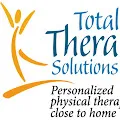0:00
Good morning guys, Tony Maritato here, licensed physical therapist and in today's video I want to talk about plantar fasciitis, also referred to as heel pain
0:09
So this affects a lot of pickleball players. It's one of those conditions that seems to come out of nowhere for a lot of players
0:16
It persists no matter what you try to do and then all of a sudden it disappears as weird as it came on
0:22
So to talk about what exactly it is, if you think of the bottom of your foot, there's what's called
0:29
the plantar fascia. It's a thick connective tissue. It goes from the point of the heel
0:34
spreads out or fans out to the base of the knuckles of the toes. This is the ball of the
0:41
foot, the arch of the foot, the heel. The heel bone is called your calcaneus. So what happens is
0:47
most people will have a severe sharp pain right at the bottom point of the calcaneus the heel bone
0:54
the pain will be most severe if you've been sitting for maybe 20-30 minutes and then you
1:00
go to get up and take those first couple steps the pain will be most severe first thing in the
1:05
morning you've been in bed all night the plantar fascia will shorten and tighten you go to take
1:10
those first morning steps away from your bed and all of a sudden you get this sharp piercing pain But the most characteristic symptom is that after you been moving for a while the pain subsides or completely goes away
1:24
Now if you do too much, the pain will come back. But the idea is that this is an active pathology inside the connective tissue
1:33
whether it's associated with active inflammation or just damage to the connective tissue
1:38
It's frustrating. It's painful. I have dealt with this over the years, usually a couple times a year, but I find that for myself
1:48
my plantar fascia will typically kick in when my immune system is either dealing with other things
1:53
or it's depressed. Maybe I'm not sleeping well, I'm under excessive amounts of stress more than usual
2:00
maybe I'm not eating well. My plantar fascia problem tends to come from my body's chemistry
2:06
more than mechanical changes. But that being said, so there are a couple options you can use to
2:13
manage, I'm not going to say cure, manage plantar fascia when the symptoms are most intense. The
2:21
first is a real simple self-massage. So if you can bring your foot up, put it on the other leg
2:26
I tend to use either one thumb the other thumb and all I do is I apply a fair amount of pressure into the most tender areas I can go parallel with the fiber orientation I can go perpendicular cross fiber
2:43
Effectively, all that I'm doing here is I'm massaging the tissue. Massage will desensitize
2:49
some of the pain sensation. I'm also spreading some of the connective tissue. When you do a
2:55
classic heel cord stretch or calf stretch, you're stretching the plantar fascia lengthwise
3:02
but when you apply that cross friction or cross fiber massage, you're spreading the fibers
3:08
perpendicular to their orientation. So it just it gives it a different kind of mechanical stimulation
3:15
Some people will have pain actually at the sides, the top or bottom, inside or outside
3:21
of the calcaneus. Some people will develop pain down at the Achilles tendon attachment
3:26
So there are different sites of pain. Ultimately, it's the same basic problem. It's a lack of healing
3:34
more than an actual injury. It's a healing deficit. And so we want to do anything we can
3:40
to facilitate the healing process This is where I would tell my patients typically to look at you know monitoring their stress levels try to improve their sleep habits look for any lifestyle changes that might happened recently
3:55
and then do anything that you believe will help your body to recover
4:01
Restful sleep, meditation, mindfulness, exercise, these are all things that are gonna help contribute
4:07
to a condition like this. If the condition persists, it's generally accepted that it's safe
4:14
while frustrating, while painful, while annoying, it's still generally safe to continue to participate
4:20
in your daily activities, continue to play pickleball. But certainly if the condition persists
4:25
more than a couple of days into a couple of weeks and it starts to interfere with your daily activities
4:31
go ahead and schedule that consultation with an orthopedic. But be mindful that even within the world of medicine
4:38
there are lots of approaches to a condition like this. Some will recommend a cortisone injection
4:44
some will advise against a cortisone injection some will recommend icing and heat and massage
4:50
others will advise against it some will recommend a foot bath like a epsom salt soak others will say
4:58
it's it doesn't make a difference you choose what's best for you if you have more questions
5:03
let me know i'll catch you on the next video


